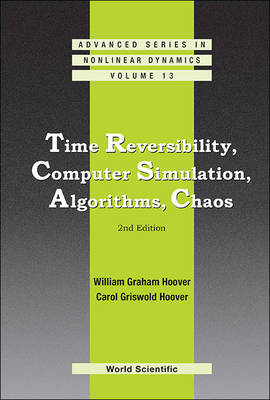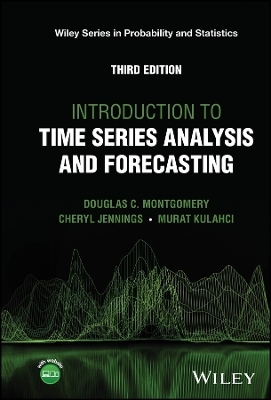
Time Reversibility, Computer Simulation, Algorithms, Chaos (2nd Edition)
Seiten
2012
|
2nd Revised edition
World Scientific Publishing Co Pte Ltd (Verlag)
978-981-4383-16-5 (ISBN)
World Scientific Publishing Co Pte Ltd (Verlag)
978-981-4383-16-5 (ISBN)
A small army of physicists, chemists, mathematicians, and engineers has joined forces to attack a classic problem, the reversibility paradox, with modern tools. This book emphasizes the author's approach to the problem of understanding the compatibility of the irreversible second law of thermodynamics with an underlying time-reversible mechanics.
A small army of physicists, chemists, mathematicians, and engineers has joined forces to attack a classic problem, the “reversibility paradox”, with modern tools. This book describes their work from the perspective of computer simulation, emphasizing the authors' approach to the problem of understanding the compatibility, and even inevitability, of the irreversible second law of thermodynamics with an underlying time-reversible mechanics. Computer simulation has made it possible to probe reversibility from a variety of directions and “chaos theory” or “nonlinear dynamics” has supplied a useful vocabulary and a set of concepts, which allow a fuller explanation of irreversibility than that available to Boltzmann or to Green, Kubo and Onsager. Clear illustration of concepts is emphasized throughout, and reinforced with a glossary of technical terms from the specialized fields which have been combined here to focus on a common theme.The book begins with a discussion, contrasting the idealized reversibility of basic physics against the pragmatic irreversibility of real life. Computer models, and simulation, are next discussed and illustrated. Simulations provide the means to assimilate concepts through worked-out examples. State-of-the-art analyses, from the point of view of dynamical systems, are applied to many-body examples from nonequilibrium molecular dynamics and to chaotic irreversible flows from finite-difference, finite-element, and particle-based continuum simulations. Two necessary concepts from dynamical-systems theory — fractals and Lyapunov instability — are fundamental to the approach.Undergraduate-level physics, calculus, and ordinary differential equations are sufficient background for a full appreciation of this book, which is intended for advanced undergraduates, graduates, and research workers. The generous assortment of examples worked out in the text will stimulate readers to explore the rich and fruitful field of study which links fundamental reversible laws of physics to the irreversibility surrounding us all.This expanded edition stresses and illustrates computer algorithms with many new worked-out examples, and includes considerable new material on shockwaves, Lyapunov instability and fluctuations.
A small army of physicists, chemists, mathematicians, and engineers has joined forces to attack a classic problem, the “reversibility paradox”, with modern tools. This book describes their work from the perspective of computer simulation, emphasizing the authors' approach to the problem of understanding the compatibility, and even inevitability, of the irreversible second law of thermodynamics with an underlying time-reversible mechanics. Computer simulation has made it possible to probe reversibility from a variety of directions and “chaos theory” or “nonlinear dynamics” has supplied a useful vocabulary and a set of concepts, which allow a fuller explanation of irreversibility than that available to Boltzmann or to Green, Kubo and Onsager. Clear illustration of concepts is emphasized throughout, and reinforced with a glossary of technical terms from the specialized fields which have been combined here to focus on a common theme.The book begins with a discussion, contrasting the idealized reversibility of basic physics against the pragmatic irreversibility of real life. Computer models, and simulation, are next discussed and illustrated. Simulations provide the means to assimilate concepts through worked-out examples. State-of-the-art analyses, from the point of view of dynamical systems, are applied to many-body examples from nonequilibrium molecular dynamics and to chaotic irreversible flows from finite-difference, finite-element, and particle-based continuum simulations. Two necessary concepts from dynamical-systems theory — fractals and Lyapunov instability — are fundamental to the approach.Undergraduate-level physics, calculus, and ordinary differential equations are sufficient background for a full appreciation of this book, which is intended for advanced undergraduates, graduates, and research workers. The generous assortment of examples worked out in the text will stimulate readers to explore the rich and fruitful field of study which links fundamental reversible laws of physics to the irreversibility surrounding us all.This expanded edition stresses and illustrates computer algorithms with many new worked-out examples, and includes considerable new material on shockwaves, Lyapunov instability and fluctuations.
Time Reversibility, Computer Simulation; Algorithms, Chaos, Computation; Gibbs' Statistical Mechanics; Irreversibility; Microscopic versus Macroscopic Approaches; Lyapunov Instability, Fractals; Reversibility Paradox; Perspective.
| Erscheint lt. Verlag | 21.8.2012 |
|---|---|
| Reihe/Serie | Advanced Series in Nonlinear Dynamics ; 13 |
| Verlagsort | Singapore |
| Sprache | englisch |
| Themenwelt | Geschichte ► Hilfswissenschaften ► Chronologie |
| Mathematik / Informatik ► Mathematik ► Angewandte Mathematik | |
| Naturwissenschaften ► Physik / Astronomie ► Astronomie / Astrophysik | |
| Naturwissenschaften ► Physik / Astronomie ► Thermodynamik | |
| ISBN-10 | 981-4383-16-3 / 9814383163 |
| ISBN-13 | 978-981-4383-16-5 / 9789814383165 |
| Zustand | Neuware |
| Informationen gemäß Produktsicherheitsverordnung (GPSR) | |
| Haben Sie eine Frage zum Produkt? |
Mehr entdecken
aus dem Bereich
aus dem Bereich
Buch | Hardcover (2024)
John Wiley & Sons Inc (Verlag)
139,95 €

